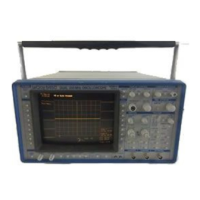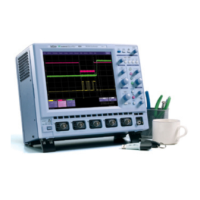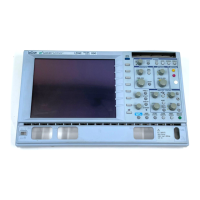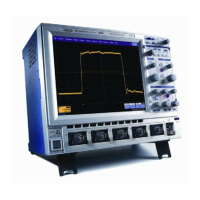(2)
The second step is
sub-sampled source
selected factor.
the addition of the selected constant to the
waveform, followed by multiplication by the
(3)
The third step is the multiplication of the source waveform by the
selected window function.
(4)
The fourth step is the computation of FFT, using
implementation of the DFT (Discrete Fourier Transform)
a fast
k=N-i
I
~
n*k
X =
x*W
n N k
k=0
where
x
k
X
n
N
is a complex array whose real part is the modified source
time domain waveform, and whose imaginary part is 0
is the resulting complex frequency domain waveform
(-j * 2 * rJN)
is the number of points in x
k
and X
n
The generalized FFT algorithm, implemented in the 9400A, works on N
which need not be a power of 2.
(5)
The fifth step is the division of the resulting complex vector X
by the coherent gain of the window function, to compensate for th~
loss of the signal energy due to windowing. This compensation
provides accurate amplitude values for isolated spectrum peaks.
The real part of X
n
is symmetric
is:
about the Nyquist frequency, that
R
n
= RN_
n
while the imaginary part is anti-symmetric, that is
I
n
= _ IN_
n
11-13
Fast Fourier Waveform Processing
Option (WP02, V 2.06FT)

